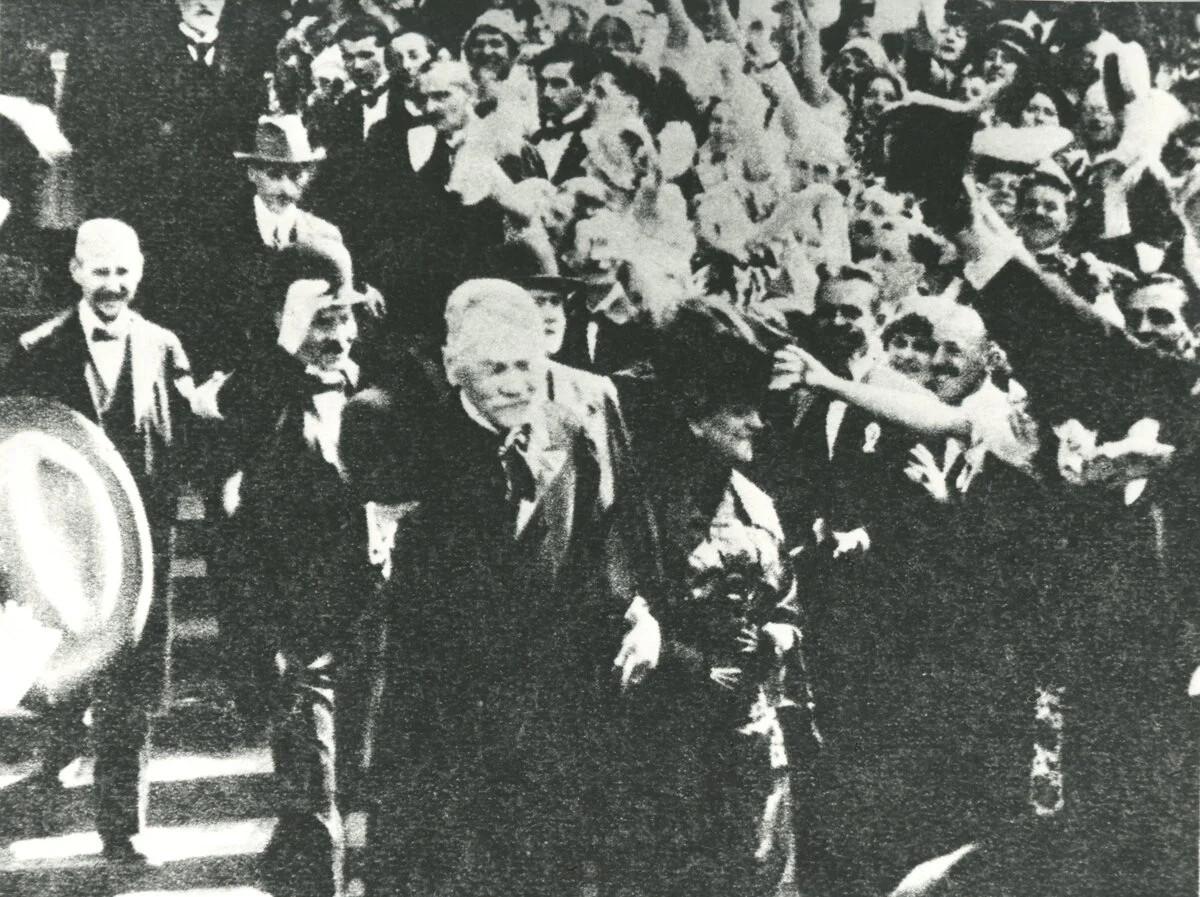They last just seconds, yet two fragments of silent film offer an extraordinary glimpse into the life of Pavol Országh Hviezdoslav, Slovakia’s towering poetic voice, whose words once stirred a nation.
In the first film, dated 1918, Hviezdoslav, already a national icon, walks arm in arm with his wife, Ilona, during celebrations in Prague marking 50 years of the National Theatre. He tips his hat to the crowd — a simple gesture, yet striking in its intimacy. The short clip, shot by Czech filmmakers Karel and Emanuel Degl, is one of the rare moving images the country has of the man who brought rural Slovak life to verse with dignity and sorrow.
The second is more haunting. Shot in 1921, months before his death, the poet sits pale and hollow-cheeked in his armchair by the window. Filmed by the pioneering documentarian couple Cyril Kašpar and Mária Urbasiówna — reportedly at the urging of Ilona — this footage is no longer about public celebration but quiet farewell.
Hviezdoslav is best known for works such as “Ežo Vlkolinský”, “Hájnikova žena”, and “Krvavé sonety” (Bloody Sonnets), the last a searing poetic response to the horrors of World War I. Born in 1849 in Vyšný Kubín, he began writing in Hungarian while studying in Miskolc, before embracing Slovak and taking the pen name Hviezdoslav in 1877 — a name inspired by the stars above; hviezda means “star” in Slovak. Today, a real celestial body bears his name.
He worked as a lawyer in the Orava region and, with Ilona, raised the children of his late brother.
Spectacular Slovakia travel guides
A helping hand in the heart of Europe thanks to our Slovakia travel guide, with more than 1,000 photos and hundreds of tourist spots.
Our detailed travel guide to the Tatras introduces you to the whole region around the Tatra mountains, including attractions on the Polish side.
Lost in Bratislava? That's impossible with our City Guide!
See some selected travel articles, podcasts, traveller info as well as other guides dedicated to Nitra, Trenčín Region, Trnava Region and Žilina Region.



 In 1918, a camera captured P. O. Hviezdoslav in Prague, tipping his hat to the crowd. (source: Literary Museum of the Slovak National Library (LM SNK))
In 1918, a camera captured P. O. Hviezdoslav in Prague, tipping his hat to the crowd. (source: Literary Museum of the Slovak National Library (LM SNK))

 P. O. Hviezdoslav and his wife Ilona (source: LM SNK)
P. O. Hviezdoslav and his wife Ilona (source: LM SNK)